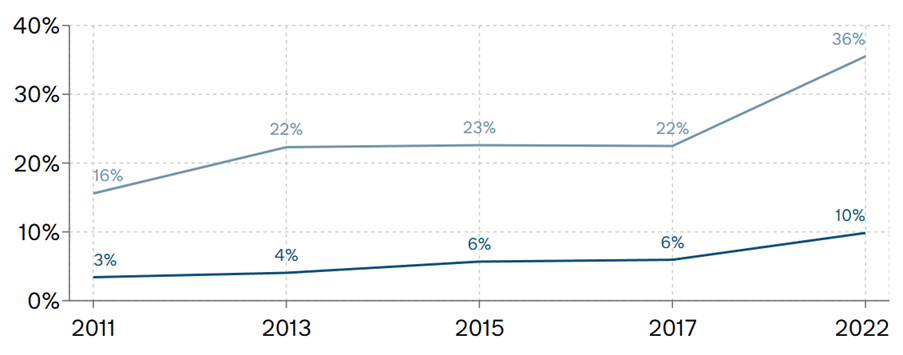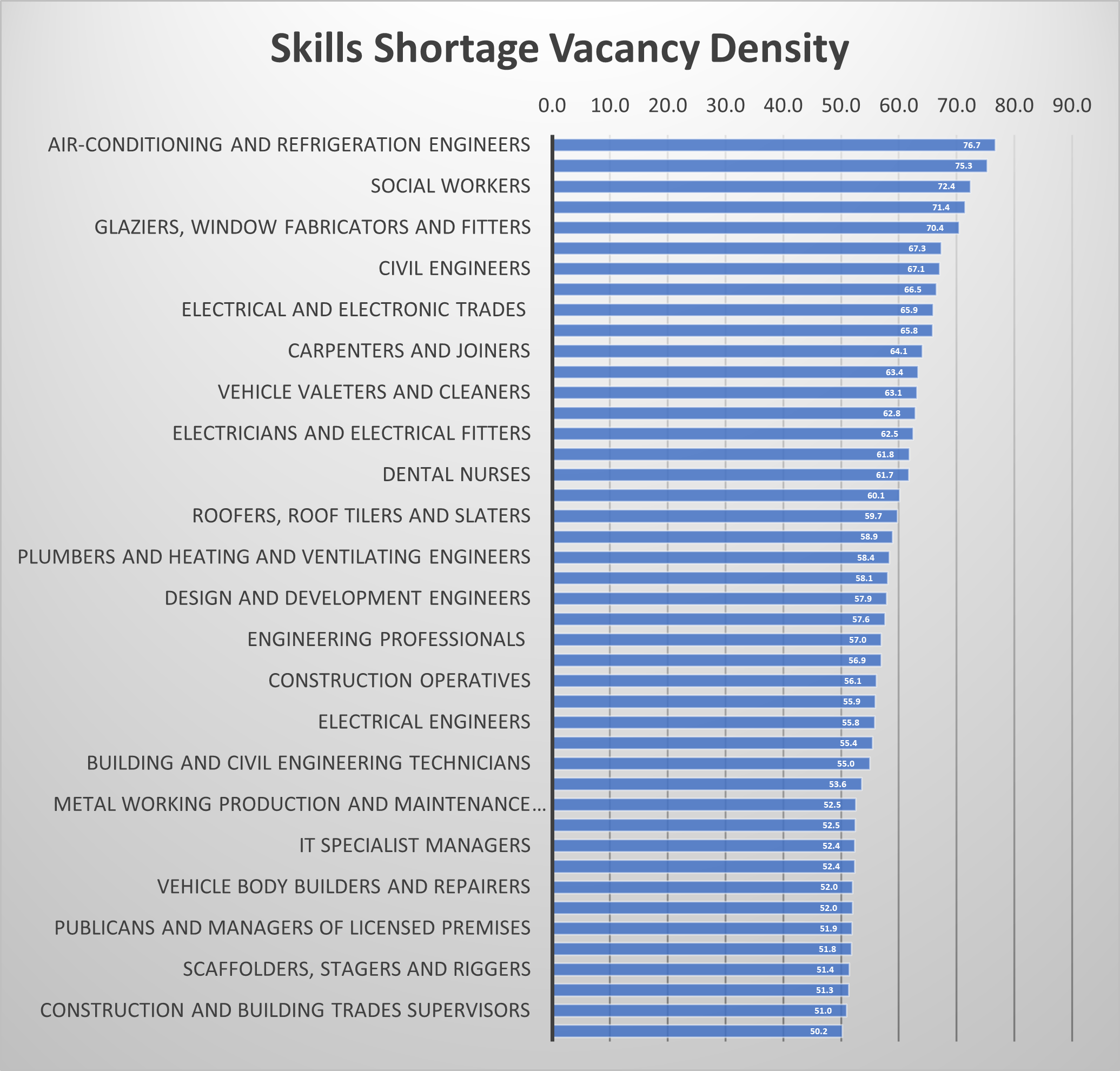A recent study commissioned by the Department for Education reveals that "Skilled Trades" continue to be the hardest vacancies to fill in the UK, driven by a significant skills shortage and a lack of interest in these roles.
The study, which interviewed nearly 73,000 UK businesses across various sectors, found that 72.5% of current skilled trade vacancies are hard to fill, with 50% of these vacancies attributed to a skills shortage. This marks a 12% increase since the last study conducted in 2017.
Interestingly, while Bricklayers & Masons were the hardest to fill skilled trade roles in 2017, they have become easier to fill, with a 20% drop to a current HTFV density of 60%.
The most recent study highlights several skilled trade roles that are now considered Skills Shortage Vacancies (SSV) and are therefore hard to fill. These roles include Metal Machining & Setters, Butchers, Glaziers, Window Fabricators and Fitters, Electricians, Plumbers, and Carpenters, all of which have a skills shortage density between 60-70%. This indicates that only 30-40% of these vacancies are filled with adequately skilled individuals.
Skilled trades in South West Wales make up around 30,000 jobs, 86% are taken by Males and 22% of the workforce are due to retire within the next 10 years.
Jane Lewis Regional Skills Partnership Manager, said “Although this is a national study, it echoes greatly what is happening across South West Wales, Since 2017 (the time of the previous study) Skilled Trades In South West Wales have declined by 9%, that’s 2,900 less workers in these roles and the workload for these trades is increasing.” She went on to say “This skills shortage is a significant concern for the local economy, as skilled trades are crucial for economic growth, commercial development, and the prosperity of communities. As the nation moves towards sustainable energy, the region will see increased green infrastructure works, freeport regeneration and domestic decarbonisation, the demand for skilled trades will only grow.”
Other job groups
All job groups have seen an increase in Skills Shortage density since 2017, with Figure 1 depicting the progressive worsening of SSV density since 2011.
Figure 1 – SSV density trend

Figure 2 shows jobs with the highest skill shortage density, currently over 50%.

Despite the worsening skills shortages, the study found that employers are investing less in staff training, with a 6% reduction since 2017.
The RLSP welcomes your views, questions, suggestions, and recommendations on how to tackle these skill shortage issues. Get involved, join our skills solutions clusters, and help us change this picture.
If you have comments, questions about this article, or would like to see more data on this study, please contact the RLSP. We are happy to facilitate.
References
Employer Skills Survey , Calendar year 2022 - Explore education statistics - GOV.UK (explore-education-statistics.service.gov.uk
LMI information 2025 Lightcast
A skill-shortage vacancy (SSV) is a vacancy that is hard to fill due to a lack of skills, qualifications or experience among applicants.
SSVs are shown as a percentage proportion of all vacancies (SSV density)
A hard to Fill Vacancy (HTFV) is a vacancy that is hard to fill due to a lack of interest, incorrect perception of the role, skills, qualifications or experience among applicants.
HTFVs are shown as a percentage proportion of all vacancies (HTFV density)